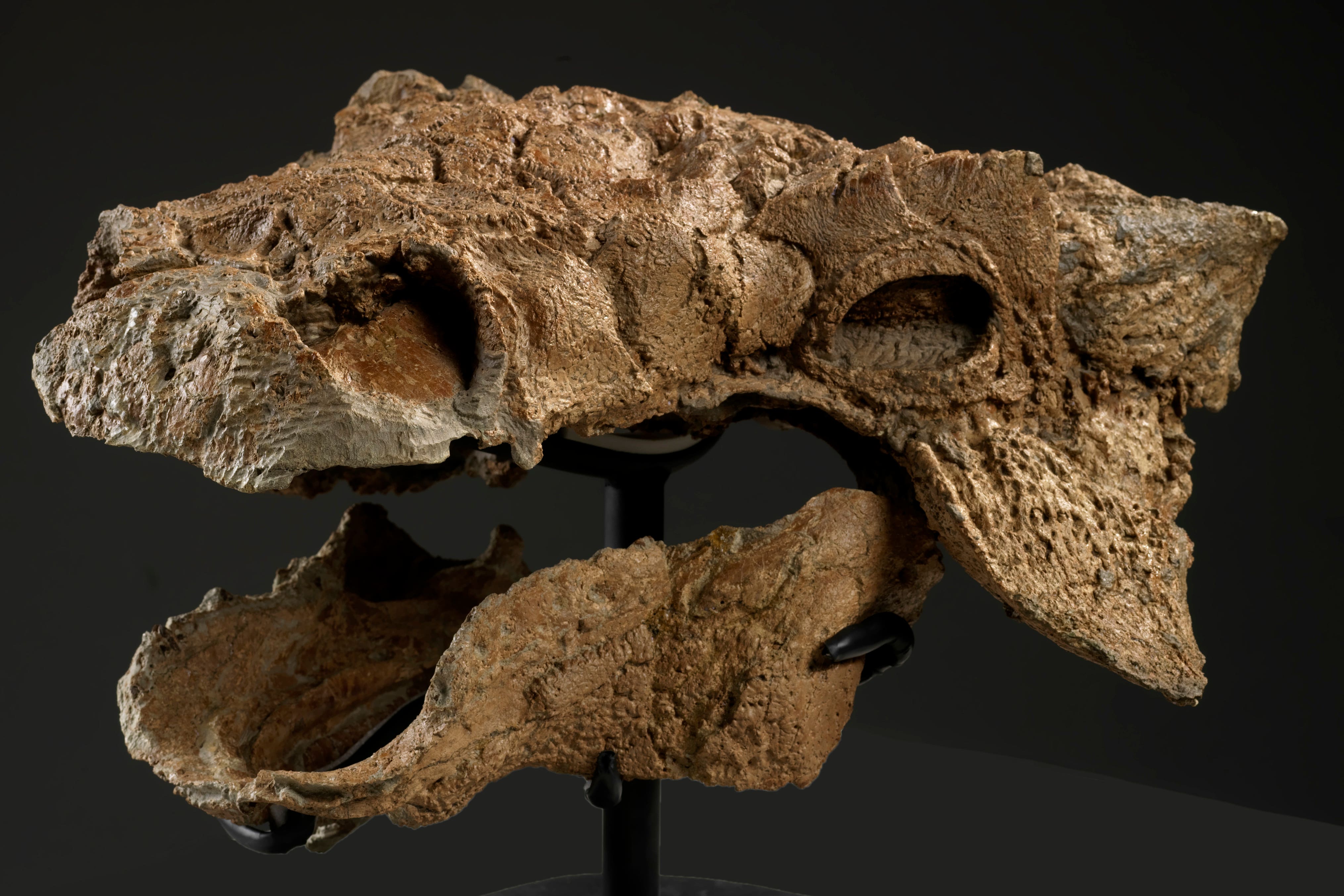Ankylosaurs battled each other as much as they fought off T. rex
The scientists found new evidence for how armoured dinosaurs used their famous tail clubs.

Your support helps us to tell the story
From reproductive rights to climate change to Big Tech, The Independent is on the ground when the story is developing. Whether it's investigating the financials of Elon Musk's pro-Trump PAC or producing our latest documentary, 'The A Word', which shines a light on the American women fighting for reproductive rights, we know how important it is to parse out the facts from the messaging.
At such a critical moment in US history, we need reporters on the ground. Your donation allows us to keep sending journalists to speak to both sides of the story.
The Independent is trusted by Americans across the entire political spectrum. And unlike many other quality news outlets, we choose not to lock Americans out of our reporting and analysis with paywalls. We believe quality journalism should be available to everyone, paid for by those who can afford it.
Your support makes all the difference.Ankylosaurs battled each other as much as they fought off T. rex, new research suggests.
The scientists found new evidence for how armoured dinosaurs used their famous tail clubs, and discovered they even used them for social dominance.
The exceptional fossil of the ankylosaur Zuul crurivastator has spikes along its flanks that were broken and re-healed while the dinosaur was alive.
Scientists think the injuries were caused by a strike by another Zuul’s massive tail club.
And the injuries Zuul sustained during its lifetime tell us about how it may have behaved and interacted with other animals in its ancient environment
They say this suggests ankylosaurs had complex behaviour, possibly battling for social and territorial dominance or even engaging in a “rutting” season for mates.
Dr Victoria Arbour, curator of palaeontology at the Royal BC Museum and former NSERC postdoctoral fellow at the Royal Ontario Museum, said: “I’ve been interested in how ankylosaurs used their tail clubs for years and this is a really exciting new piece of the puzzle.
“We know that ankylosaurs could use their tail clubs to deliver very strong blows to an opponent, but most people thought they were using their tail clubs to fight predators.
“Instead, ankylosaurs like Zuul may have been fighting each other.”
The 76-million-year-old, plant-eating dinosaur, part of the Royal Ontario Museum’s vertebrate fossil collection, is named after the fictional monster ‘Zuul’ from the 1984 movie Ghostbusters.
Initially the skull and tail had been freed from the surrounding rock, but the body was still encased in 35,000 pounds of sandstone.
After years of work, the body was revealed to have preserved most of the skin and bony armour across the entire back and flanks.
The animal’s body was covered in bony plates of different shapes and sizes and the ones along its sides were particularly large and spiky.
The scientists also noticed that a number of spikes near the hips on both sides of the body are missing their tips and the bone and horny sheath has healed into a blunter shape.
According to the researchers, the pattern of these injuries is more consistent with being the result of some form of ritualised combat or jousting with their tail clubs.
Because of where the injuries are located on the body, the scientists suggest the injuries were not caused by an attacking predator like a tyrannosaur.
Zuul’s tail is about three metres (10 feet) long with sharp spikes running along its sides.
The back half of the tail was stiff and the tip was encased in huge bony blobs, creating a formidable sledgehammer-like weapon.
Zuul crurivastator means “Zuul, the destroyer of shins” – this is a nod to the idea that tail clubs were used to smash the legs of tyrannosaurs who walked on two legs.
The injuries Zuul sustained during its lifetime tell us about how it may have behaved and interacted with other animals in its ancient environment
While the study does not refute the idea that tail clubs could be used in self-defence against predators, it shows they would also have functioned for within-species combat—a factor that more likely drove their evolution.
In the present day, specialised animal weapons like the antlers of deer or the horns of antelopes have usually evolved to be used mostly for fighting members of the same species during battles for mates or territory.
Dr David Evans, Temerty Chairman and Curator of Vertebrate Palaeontology at the Royal Ontario Museum, said: “The fact that the skin and armour are preserved in place is like a snapshot of how Zuul looked when it was alive.
“And the injuries Zuul sustained during its lifetime tell us about how it may have behaved and interacted with other animals in its ancient environment.”
The study by researchers at Royal Ontario Museum (ROM), Royal BC Museum, and North Carolina Museum of Natural Sciences is published in the Biology Letters journal.